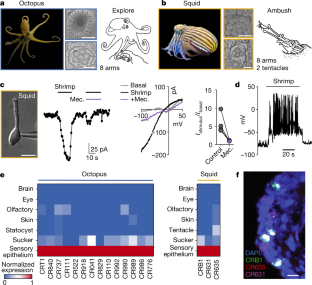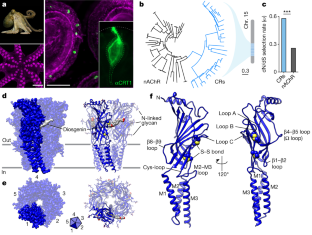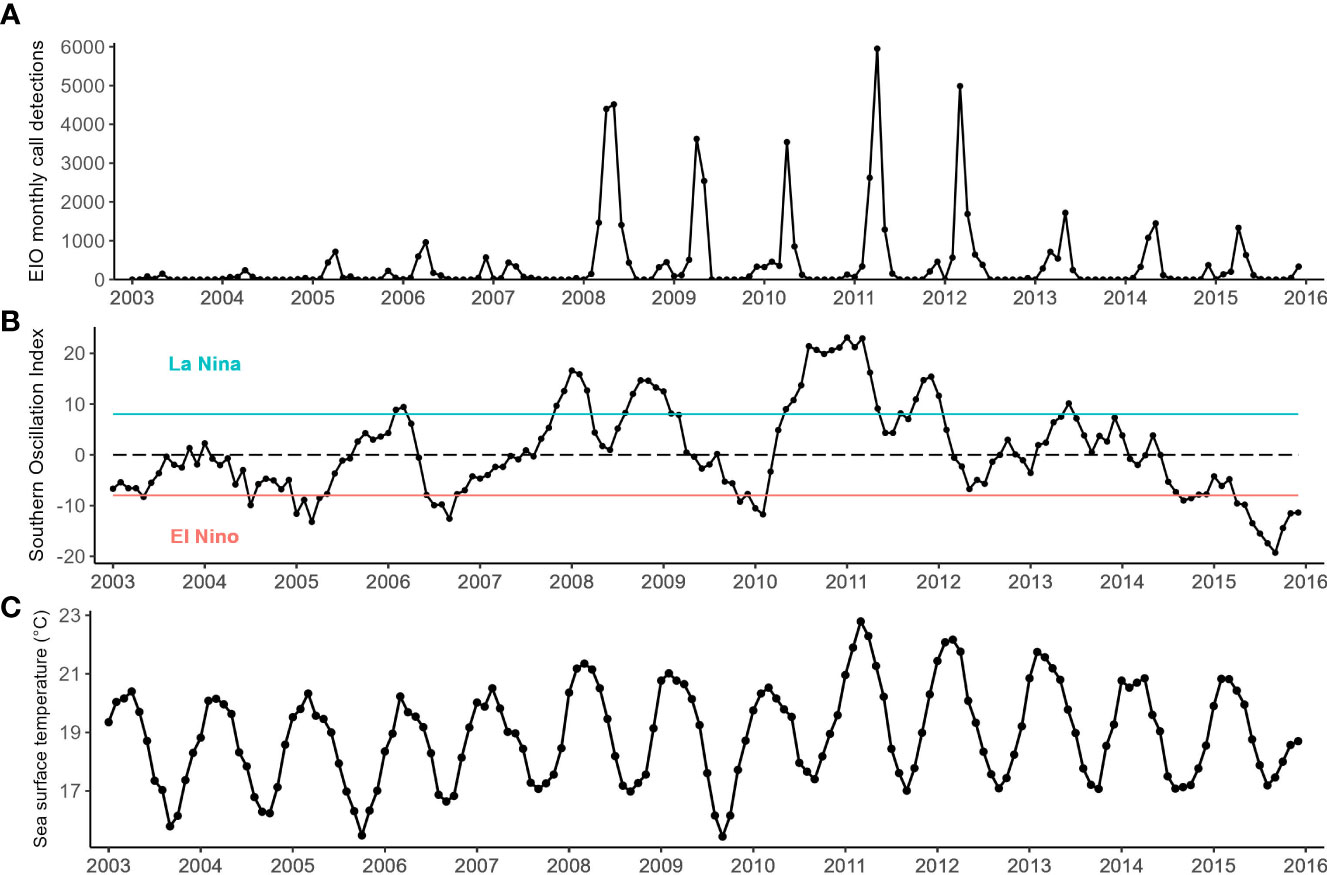2023-04-14 カリフォルニア大学サンディエゴ校(UCSD)
UCサンディエゴ大学とハーバード大学の科学者に率いられた一対の研究は、新しい動物の特徴の起源物語を提供し、感覚受容体における進化のリンクを明らかにしている。
研究チームは、感覚受容体を鍵として、生態学、神経処理、および行動の交差点で進化的イノベーションの場所として注目し、細胞表面受容体の新しいファミリーを発見し、タイムライン上に感覚受容体と祖先性神経伝達物質受容体を置くことに成功した。
<関連情報>
- https://today.ucsd.edu/story/tracking-a-new-path-to-octopus-and-squid-sensing-capabilities
- https://www.nature.com/articles/s41586-023-05808-z
- https://www.nature.com/articles/s41586-023-05822-1
感覚の特殊化がタコやイカの行動を動かす Sensory specializations drive octopus and squid behaviour
Guipeun Kang,Corey A. H. Allard,Wendy A. Valencia-Montoya,Lena van Giesen,Jeong Joo Kim,Peter B. Kilian,Xiaochen Bai,Nicholas W. Bellono & Ryan E. Hibbs
Nature Published:12 April 2023
DOI:https://doi.org/10.1038/s41586-023-05808-z

Abstract
The evolution of new traits enables expansion into new ecological and behavioural niches. Nonetheless, demonstrated connections between divergence in protein structure, function and lineage-specific behaviours remain rare. Here we show that both octopus and squid use cephalopod-specific chemotactile receptors (CRs) to sense their respective marine environments, but structural adaptations in these receptors support the sensation of specific molecules suited to distinct physiological roles. We find that squid express ancient CRs that more closely resemble related nicotinic acetylcholine receptors, whereas octopuses exhibit a more recent expansion in CRs consistent with their elaborated ‘taste by touch’ sensory system. Using a combination of genetic profiling, physiology and behavioural analyses, we identify the founding member of squid CRs that detects soluble bitter molecules that are relevant in ambush predation. We present the cryo-electron microscopy structure of a squid CR and compare this with octopus CRs1 and nicotinic receptors2. These analyses demonstrate an evolutionary transition from an ancestral aromatic ‘cage’ that coordinates soluble neurotransmitters or tastants to a more recent octopus CR hydrophobic binding pocket that traps insoluble molecules to mediate contact-dependent chemosensation. Thus, our study provides a foundation for understanding how adaptation of protein structure drives the diversification of organismal traits and behaviour.
タコにおける感覚受容体の進化の構造的基盤 Structural basis of sensory receptor evolution in octopus
Corey A. H. Allard,Guipeun Kang,Jeong Joo Kim,Wendy A. Valencia-Montoya,Ryan E. Hibbs & Nicholas W. Bellono
Nature Published:12 April 2023
DOI:https://doi.org/10.1038/s41586-023-05822-1

Abstract
Chemotactile receptors (CRs) are a cephalopod-specific innovation that allow octopuses to explore the seafloor via ‘taste by touch’1. CRs diverged from nicotinic acetylcholine receptors to mediate contact-dependent chemosensation of insoluble molecules that do not readily diffuse in marine environments. Here we exploit octopus CRs to probe the structural basis of sensory receptor evolution. We present the cryo-electron microscopy structure of an octopus CR and compare it with nicotinic receptors to determine features that enable environmental sensation versus neurotransmission. Evolutionary, structural and biophysical analyses show that the channel architecture involved in cation permeation and signal transduction is conserved. By contrast, the orthosteric ligand-binding site is subject to diversifying selection, thereby mediating the detection of new molecules. Serendipitous findings in the cryo-electron microscopy structure reveal that the octopus CR ligand-binding pocket is exceptionally hydrophobic, enabling sensation of greasy compounds versus the small polar molecules detected by canonical neurotransmitter receptors. These discoveries provide a structural framework for understanding connections between evolutionary adaptations at the atomic level and the emergence of new organismal behaviour.


